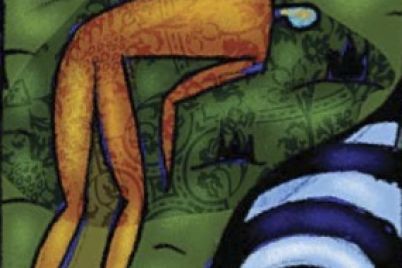Shortly after winning the Nobel Prize for Literature, Toni Morrison said that the personal significance of the award was that as an African American it gave her power. What Morrison meant was that her fiction allows her to combat the often maligned image of African Americans and to place their contributions to society on the American cultural map.
Morrison’s lesson about the importance of fiction in American culture is a lesson that Italian Americans have not yet learned. For decades I have listened to Italian Americans protest Italian American stereotypes in film and the media, from nonna e pizza to the Mafia. To the chagrin of these Italian Americans, the stereotypes only seem to grow in number rather than diminish, in spite of our economic and social success in America. The recent Olive Garden Restaurant commercial, the release of Analyze This, and the new HBO series The Sopranos are only three recent examples that have drawn the ire of Italian Americans.
But what Italian Americans have failed to realize is that we are in large part responsible for the continued dissemination of Italian American stereotypes. The question that we must ask ourselves is what options have we given American culture? Italian Americans in general have been disinterested in supporting the writing and publication of Italian American literature. As a result, our narrative and our contribution to American culture are not in the public domain.
Sadly, ninety-nine percent of Italian American novels published before 1960 remains out of print. What Italian Americans do not realize in their protests against Italian American stereotypes is that they have not worked to give American culture sufficient alternative images of Italian Americans in North America. These novels, from Garibaldi Lapolla’s in the 1930s to Antonia Pola’s in the 1950s, relate the complex narrative of Italian immigration and assimilation into American society.
But nearly all of those early Italian immigrant novels were printed in a single edition and then went out of print. Even Pietro Di Donato’s Christ in Concrete, perhaps the most celebrated Italian American novel before the war, has had a sparse reprint history since 1939, even though at the time of its publication it purportedly sold over 200,000 copies, held a spot on the best-seller list for weeks, and was translated into eight languages. In spite of the novel’s success and the positive image of Italian immigrants it portrays, the novel was nearly forgotten, even among Italian Americans. This same neglect, which has obscured our history in America before 1960, is reflected as well in Italian Americans’ singular lack of interest in the current renaissance in Italian American and Italian Canadian literature. How do we expect Italian American writers to succeed if we do not buy their books and learn about the history of our own complex role in American culture? Where are Italian American book buyers?
Criticized though he is among Italian Americans for The Godfather, Mario Puzo’s best writing came long before 1969. But who among Italian Americans has read his early works? Puzo and Coppola not only capitalized on a popular cinematic genre and Italian American stereotype, they also filled a void in Italian American culture. As difficult as it may seem for Italian Americans to accept, they are largely responsible for creating this cultural void. What choices have Italian Americans given American culture of Italian American life? We have consistently for nearly 100 years neglected our real narrative about our immigrant struggle and contribution to American culture. Small wonder that when we protest our public images we are dismayed that no one seems to hear us. Where can Italian Americans be found outside the obvious public stereotypes of us?
When attempting to influence corporate culture, from Madison Avenue to Hollywood, we lack cultural power. Through our indifference we have neglected to place our narrative on the national cultural shelf with other groups. Why should anyone listen to our protests when it is not clear who and what we are in American life? We must not only support the publication of our narrative, we must as a community purchase books by and about Italian Americans. We have little power to persuade others how to think about us because we have not yet made a significant contribution in the eyes of American culture. This omission is in large part the fault of Italian Americans.
Ken Scambray teaches literature at the University of La Verne in California.
First published in Accenti Magazine, Issue 1.


